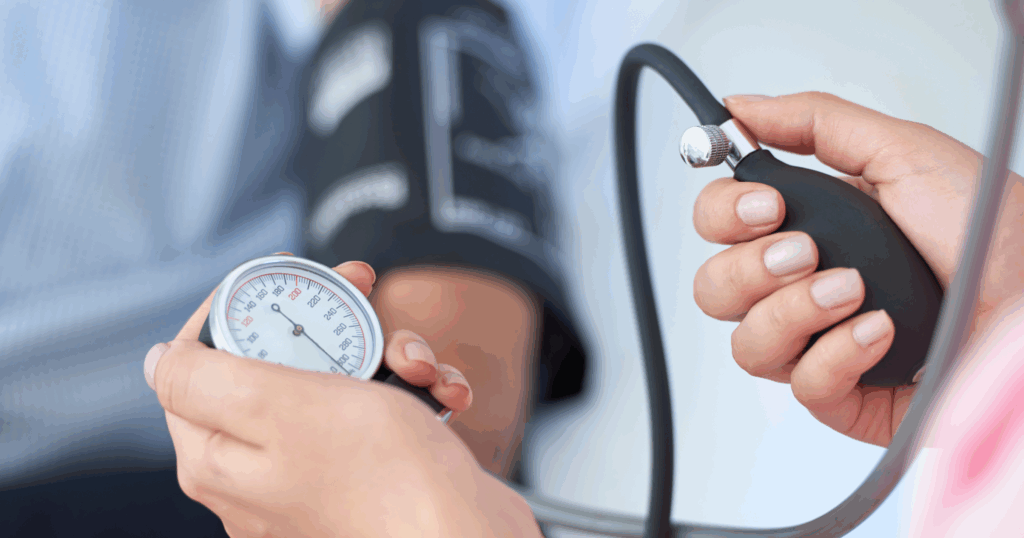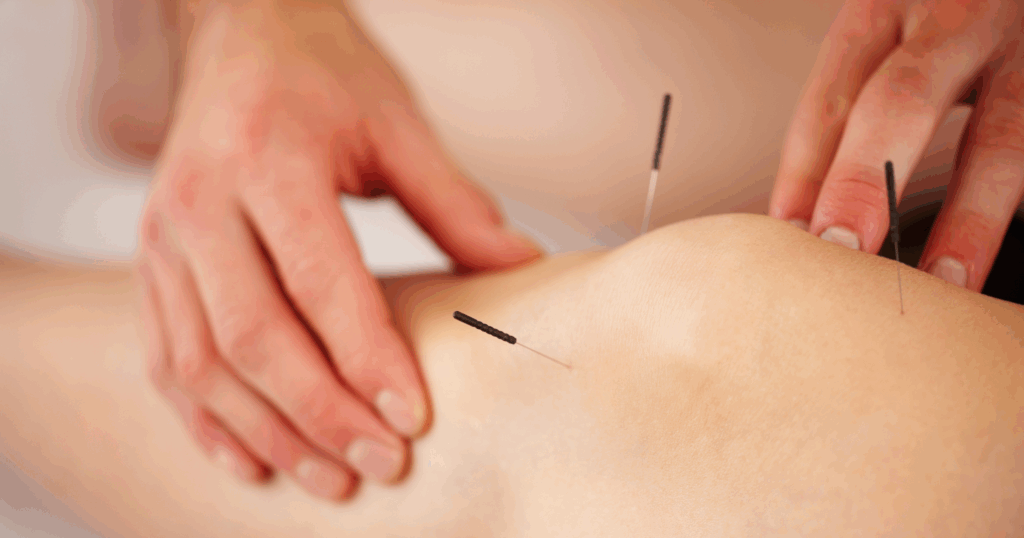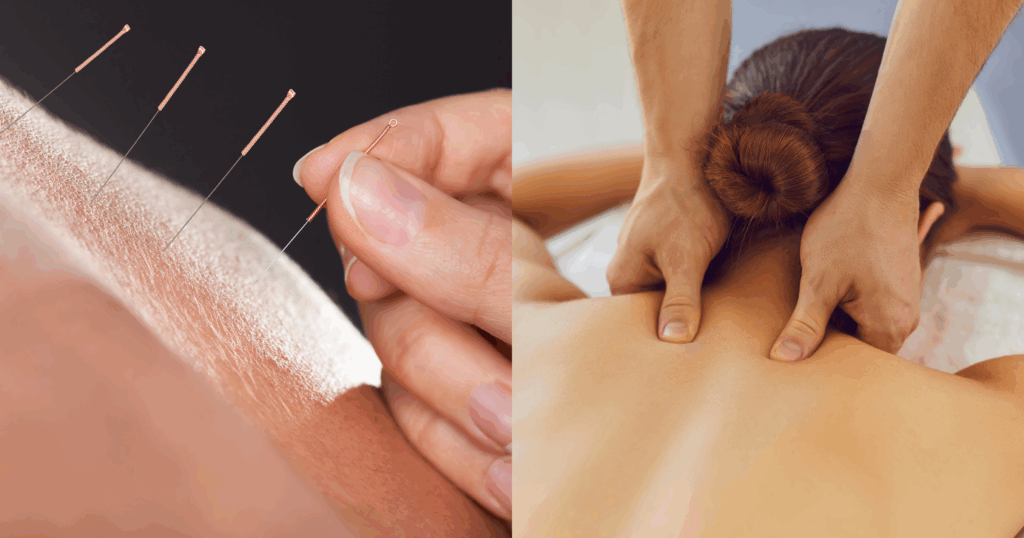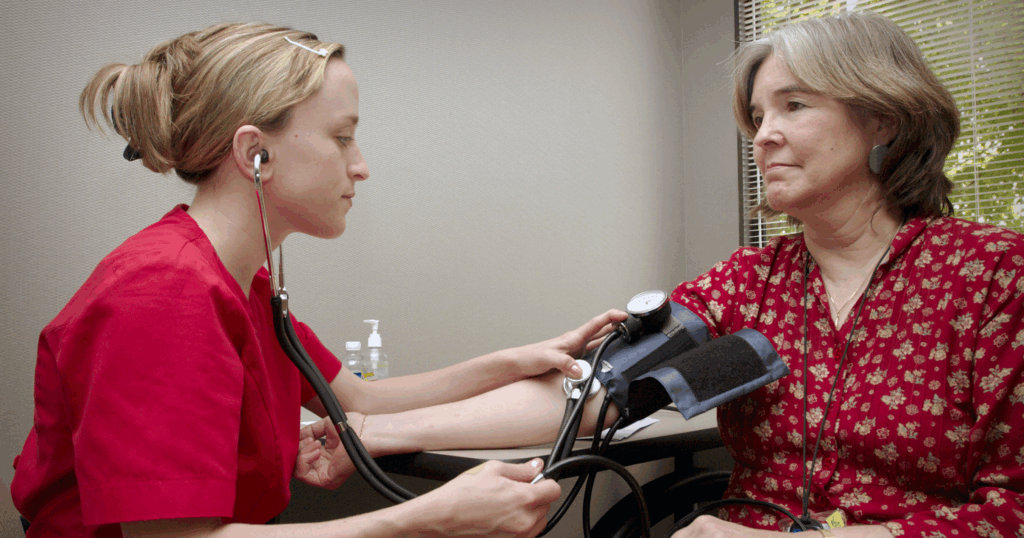Acupuncture for High Blood Pressure: A Natural Approach to Managing Hypertension
Hypertension, commonly known as high blood pressure, is a silent force that quietly increases the risk of heart attack, stroke, and kidney disease for millions worldwide. Its prevalence has reached epidemic proportions, touching nearly every family and straining healthcare systems globally. Despite the availability of effective medications, many individuals struggle to achieve optimal blood pressure control, often due to side effects, cost, or the desire for a more natural approach.
In recent years, a growing number of people have turned to integrative and alternative therapies, seeking solutions that address the whole person-body, mind, and spirit. Acupuncture, rooted in Traditional Chinese Medicine (TCM), has emerged as a promising adjunct or alternative for managing high blood pressure. Here, we delve into the science, practice, and potential of acupuncture for hypertension, providing both established facts and fresh insights for those interested in exploring this ancient therapy.
Acupuncture for High Blood Pressure: A Natural Approach to Managing Hypertension
Hypertension, commonly known as high blood pressure, is a silent force that quietly increases the risk of heart attack, stroke, and kidney disease for millions worldwide. Its prevalence has reached epidemic proportions, touching nearly every family and straining healthcare systems globally. Despite the availability of effective medications, many individuals struggle to achieve optimal blood pressure control, often due to side effects, cost, or the desire for a more natural approach.
In recent years, a growing number of people have turned to integrative and alternative therapies, seeking solutions that address the whole person-body, mind, and spirit. Acupuncture, rooted in Traditional Chinese Medicine (TCM), has emerged as a promising adjunct or alternative for managing high blood pressure. Here, we delve into the science, practice, and potential of acupuncture for hypertension, providing both established facts and fresh insights for those interested in exploring this ancient therapy.
Key Takeaways
-
Acupuncture may help regulate blood pressure by influencing the nervous system, reducing stress hormones, and improving blood vessel relaxation.
-
Acupuncture combined with medication can result in greater blood pressure reductions than medication alone, making it a valuable complementary therapy.
-
Electroacupuncture shows longer-lasting effects, with clinical trials noting reduced systolic and diastolic levels weeks after treatment.
-
Seasonal acupuncture adjustments can enhance blood pressure control by aligning treatments with the body’s changing energy patterns throughout the year.
-
Targeted acupoints like LI11, LR3, and ST36 are commonly used in hypertension protocols and have been linked to improved blood pressure regulation and rhythm.
What Is High Blood Pressure?
High blood pressure, or hypertension, is a chronic condition where blood flows through your arteries with more force than normal. There are two main types: primary (essential) hypertension, which develops gradually without a single identifiable cause and is influenced by factors like genetics, age, and lifestyle, and secondary hypertension, which is less common and results from underlying issues such as kidney disease, hormonal disorders, or certain medications.
Primary hypertension rarely causes symptoms, earning it the nickname “silent killer,” as most people don’t realize they have it until serious complications-like heart attack or stroke-occur. Secondary hypertension, on the other hand, can sometimes be traced to a specific cause and may improve or resolve if that cause is treated. Regular blood pressure checks are the only way to know if you have hypertension, since both types can quietly damage your organs over time.
Potential Risks of Unmanaged High Blood Pressure
While high blood pressure often develops silently, its long-term effects are anything but quiet. Left untreated, hypertension can damage vital organs and systems, leading to:
- Cardiovascular complications: Elevated pressure strains the heart, increasing the risk of heart attacks, heart failure, and arterial damage.
- Kidney damage: Hypertension is a leading cause of chronic kidney disease, impairing the body’s ability to filter waste and balance fluids.
- Cognitive decline: Persistent high blood pressure may contribute to memory issues, dementia, and reduced brain function over time.
- Vision problems: High pressure can damage blood vessels in the eyes, leading to hypertensive retinopathy and, in severe cases, vision loss.
Conventional Treatments for High Blood Pressure
Effectively managing high blood pressure often starts with making meaningful lifestyle changes that support heart health and overall well-being. These foundational steps include:
- Adopting a balanced, low-sodium diet: Emphasizing whole foods such as fruits, vegetables, whole grains, and lean proteins while reducing processed foods and excess salt intake can significantly help regulate blood pressure.
- Engaging in regular physical activity: Consistent exercise, whether it’s brisk walking, swimming, or yoga, strengthens the cardiovascular system and promotes healthy circulation.
- Incorporating stress management techniques: Chronic stress can elevate blood pressure, so practices like mindfulness meditation, deep breathing exercises, tai chi, or acupuncture itself can be powerful tools to restore balance.
- Achieving and maintaining a healthy weight: Excess body weight puts additional strain on the heart and blood vessels, so gradual, sustainable weight loss can have a profound impact on blood pressure control.
While these lifestyle modifications form the cornerstone of hypertension management, many individuals find that addressing the emotional and energetic aspects of health is equally important. This holistic perspective recognizes that factors such as chronic stress, poor sleep, and unresolved emotional tension can contribute to elevated blood pressure. Integrative therapies like acupuncture offer a complementary pathway to support these deeper layers of well-being, helping to create lasting change beyond diet and exercise alone.
How Acupuncture May Affect Blood Pressure
Acupuncture’s potential to lower blood pressure is rooted in both ancient wisdom and modern science. TCM views hypertension as a disruption in the flow of qi (vital energy) along the body’s meridians. By stimulating specific acupoints, acupuncture aims to restore balance and harmony.
Modern research suggests several mechanisms by which acupuncture may influence blood pressure:
- Nervous system modulation: Acupuncture can regulate the autonomic nervous system, promoting relaxation and reducing sympathetic (“fight or flight”) activity.
- Hormonal effects: Studies show reductions in stress hormones like norepinephrine, renin, and aldosterone after acupuncture, which are key players in blood pressure regulation.
- Vascular relaxation: Acupuncture may enhance the release of vasodilators, substances that relax blood vessels and lower resistance.
- Stress reduction: By calming the mind and body, acupuncture can indirectly support cardiovascular health.
Notably, electroacupuncture-a technique using gentle electrical stimulation-has demonstrated prolonged blood pressure reduction in clinical trials, with effects lasting weeks beyond the treatment period.
Scientific Evidence: Acupuncture for Hypertension
The research landscape is evolving, with both promise and caution. Systematic reviews and meta-analyses of randomized controlled trials reveal several key findings:
- Acupuncture vs. Sham/Placebo: Some studies show modest reductions in systolic and diastolic blood pressure compared to sham acupuncture, though results can vary and statistical significance is sometimes borderline.
- Acupuncture plus Medication vs. Medication Alone: Combining acupuncture with antihypertensive drugs often leads to greater blood pressure reductions than medication alone, with some studies reporting decreases of 8 mm Hg systolic and 4 mm Hg diastolic.
- Noninferiority to Medication: A few trials suggest acupuncture may be as effective as standard medications, though these studies often have small sample sizes and methodological limitations.
- Long-Term Effects: Low-frequency, long-duration acupuncture treatments appear to yield the most pronounced and lasting benefits, especially in elderly populations.
Emerging evidence also highlights the value of integrating acupuncture with moxibustion (heat therapy) and auricular (ear) acupressure for enhanced outcomes.
Acupuncture and Seasonal Hypertension
It may surprise many that seasonal changes can influence blood pressure. Colder months are often associated with increased readings due to constricted blood vessels and reduced physical activity, while warmer weather may lead to lower blood pressure as heat promotes vasodilation and more fluid loss through perspiration.
From a Traditional Chinese Medicine (TCM) perspective, seasonal shifts impact the balance of yin and yang, as well as the movement of qi and blood throughout the body. Acupuncture treatments can be adjusted to support this seasonal harmony:
- In winter, our practitioners often focus on warming and tonifying the kidney and yang energy to counter the cold-induced stagnation.
- In summer, cooling techniques and points that clear heat and support heart function may be emphasized to maintain a steady rhythm and avoid sudden drops in blood pressure.
Tailoring acupuncture care to seasonal patterns not only supports cardiovascular health but also enhances overall well-being by syncing the body with nature’s cycles.
Acupoints Commonly Used for High Blood Pressure
The effectiveness of acupuncture for hypertension relies on carefully chosen acupoints, each offering unique therapeutic benefits:
- Taichong (LR3): Found on the foot, this point is traditionally used to calm the liver and ease internal tension, which can contribute to elevated blood pressure.
- Quchi (LI11): Located at the elbow, Quchi is valued for its ability to clear heat and regulate energy flow, playing a central role in many hypertension protocols.
- Fengchi (GB20): Situated at the base of the skull, this point helps relieve tension and supports healthy circulation.
- Zusanli (ST36): Below the knee, Zusanli is renowned for boosting overall vitality and supporting immune function.
- Fenglong (ST40): On the lower leg, this point is used to resolve phlegm and dampness, which, in TCM, can affect cardiovascular health.
Research highlights that using specific combinations-especially Quchi (LI11), Taichong (LR3), and Zusanli (ST36)-can lead to significant reductions in both systolic and diastolic blood pressure, with effects seen after just a few sessions. Studies also show that these targeted acupoints can improve blood pressure variability and help restore a healthier day-night rhythm, underscoring the importance of point selection for optimal results.
Acupuncture vs. Acupressure for Blood Pressure
Acupuncture and acupressure both target specific points on the body to help lower blood pressure, but they differ in how deeply they work. Acupuncture uses fine needles to reach deeper tissues, while acupressure relies on surface touch and manual pressure.
Research shows that both methods can reduce blood pressure, but acupuncture tends to produce a faster and more pronounced effect. In one study, acupuncture lowered systolic blood pressure by about 17.7% and diastolic by 16.4%, while acupressure achieved reductions of 13.4% and 14.2%, respectively. This suggests that while acupressure is a gentle, accessible option for home use, especially for those who prefer non-invasive approaches, acupuncture is generally more effective for significant hypertension.
Auricular (ear) acupressure is also gaining attention. When combined with medication, it may further enhance blood pressure control, though its effects are still milder compared to full acupuncture. Overall, acupressure can be a supportive self-care technique, but for those needing substantial blood pressure reduction, professional acupuncture remains the stronger choice.
What to Expect During an Acupuncture Session
For many, the first acupuncture visit brings a mix of curiosity and apprehension. Sessions typically begin with a thorough assessment of your health history, lifestyle, and unique constitution. Treatment involves the gentle insertion of sterile, hair-thin needles at selected acupoints, with each session lasting 20–40 minutes.
Frequency varies-weekly appointments are common at the outset, tapering as blood pressure stabilizes. Many patients report a sense of deep relaxation, improved sleep, and enhanced well-being after sessions. Side effects are rare but may include mild bruising, temporary soreness, or lightheadedness.
The duration of acupuncture’s effects can extend for weeks, especially with regular, long-term treatment. For best results, ongoing sessions and lifestyle adjustments are recommended.
Integrating Acupuncture with Conventional Care
Safety is paramount when combining acupuncture with prescription medications. Current evidence suggests that acupuncture can be safely integrated with antihypertensive drugs, often enhancing their effectiveness and potentially allowing for lower dosages over time. Open communication with your healthcare team ensures coordinated care and optimal monitoring of blood pressure changes. Tracking your progress with home blood pressure monitors and regular check-ins supports informed decision-making and empowers you to take charge of your health.
Empowering Your Heart Health with Acupuncture
High blood pressure is a complex, multifaceted condition that demands a holistic approach. Acupuncture offers a time-honored, scientifically supported avenue for lowering blood pressure, especially when combined with lifestyle changes and conventional therapies. While more rigorous research is needed, the current evidence points to meaningful benefits-particularly with regular, long-term treatment and the integration of modalities like moxibustion and auricular acupressure.
At ACA Acupuncture & Wellness, we are committed to guiding you on your journey to better health, blending the wisdom of Traditional Chinese Medicine with the best of modern science. If you’re seeking a compassionate, integrative approach to managing hypertension, we invite you to explore how acupuncture can become part of your personalized wellness plan. Your well-being is our mission, and together, we can chart a path toward lasting cardiovascular health.
Source:
Zhao, X., Hu, H., Li, J., Shang, H., Zheng, H., Niu, J., Shi, X., & Wang, S. (2015). Is acupuncture Effective for hypertension? A Systematic Review and Meta-Analysis. PLoS ONE, 10(7), e0127019. https://doi.org/10.1371/journal.pone.0127019
Li, D., Zhou, Y., Yang, Y., Ma, Y., Li, X., Yu, J., Zhao, Y., Zhai, H., & Lao, L. (2014). Acupuncture for Essential Hypertension: A Meta‐Analysis of Randomized SHAM‐Controlled Clinical Trials. Evidence-based Complementary and Alternative Medicine, 2014(1). https://doi.org/10.1155/2014/279478
Hapsari, F. I., Rahardjo, S. S., & Prasetya, H. (2021). The Effect of acupuncture therapy on reducing blood pressure in hypertension Patients: Meta-Analysis. Journal of Epidemiology and Public Health, 6(1), 125–133. https://doi.org/10.26911/jepublichealth.2021.06.01.12
Frequently Asked Questions
Is acupuncture effective for high blood pressure?
Yes, acupuncture has been shown to effectively lower both systolic and diastolic blood pressure, particularly in cases of mild to moderate hypertension. Clinical trials demonstrate that a course of acupuncture treatments can reduce 24-hour ambulatory blood pressure by about 5.4 mm Hg systolic and 3.0 mm Hg diastolic during the treatment period, with minimal side effects. However, these effects tend to last only as long as the treatment continues, so ongoing sessions may be necessary to maintain benefits.
What is the best acupuncture point for high blood pressure?
Several acupoints are commonly used to help reduce blood pressure, with some evidence supporting their effectiveness:
- Taichong (LR3): Located between the big toe and second toe, known for calming the liver and regulating qi.
- Quchi (LI11): Found at the elbow crease, used to clear heat and promote circulation.
- Fengchi (GB20): At the base of the skull, helps relieve tension and improve blood flow.
- Zusanli (ST36) and Fenglong (ST40): On the leg, support overall vitality and resolve dampness.
Among these, GB20 (Fengchi) is often highlighted for urgent blood pressure relief through acupressure.
What is the fastest thing to lower blood pressure?
For immediate blood pressure reduction, relaxation techniques such as deep breathing, meditation, and stress reduction are effective. Additionally, applying acupressure to points like GB20 (Wind Pool) at the base of the skull can provide quick relief by reducing muscle tension and improving cerebral blood flow. Warm baths or showers may also help relax the body and lower blood pressure temporarily.
What do the Chinese take for high blood pressure?
Traditional Chinese Medicine (TCM) approaches hypertension with a combination of acupuncture, herbal remedies, dietary adjustments, and lifestyle changes. Commonly used herbs include Tian Ma (Gastrodia), Gou Teng (Uncaria), and Dan Shen (Salvia), which aim to calm the liver, improve circulation, and reduce internal heat or wind that contribute to high blood pressure. Acupuncture is often integrated with these herbal therapies for a holistic approach.
What is the number one drink to lower blood pressure?
Among various drinks studied, beet juice stands out for its rapid blood pressure-lowering effects due to its high nitrate content, which promotes vasodilation. Other beneficial drinks include hibiscus tea, pomegranate juice, tomato juice, and skim milk, all rich in minerals like potassium, calcium, and magnesium that support vascular health. However, grapefruit juice should be consumed cautiously as it can interact dangerously with some blood pressure medications.
Where do you pinch to lower blood pressure?
Pinching or applying pressure to specific acupressure points can help lower blood pressure. The most effective points include:
- Between the big toe and second toe (LV3)
- Between the thumb and index finger (LI4)
- At the base of the skull, in the hollows beside the spine (GB20)
Applying firm pressure or gentle pinching to these points for 1–2 minutes can relieve tension and promote blood flow, aiding in blood pressure reduction.
Contact ACA Acupuncture & Wellness
Get in Touch
Newsletter Sign Up
LOCATIONS
MANHATTAN
QUEENS
NEW JERSEY
CALIFORNIA
ACA Franchise Opportunities
The over $4 billion US acupuncture market offers a great opportunity with over 10% annual growth rates and a continuing flow of new patients interested in the benefits of acupuncture.




